If you, or someone you know, are interested in keeping chickens but don’t think you have enough room to provide to the flock, you may be considering raising bantam chicken! Bantam chickens are very small in comparison to standard chicken breeds and require less coop space as a result. In this guide, I will discuss in detail the different types of bantam chickens, as well as the best bantam breeds to lay eggs in a small backyard to help you choose the best banties for you!

The History of Bantam Chickens
Bantam chickens originally come from a seaport where sailors would regularly stop for supplies in Banten, Indonesia. The sailors noticed that the local chickens would be perfect for transport aboard their ships because they were a smaller size and would require less space than regular chickens.
Bantam chickens have since become very popular breeds to raise in smaller urban areas as a backyard flock. Banties also use a lot less chicken feed 😉
While the term bantam is very generalized to include all small chickens, there are different types of bantam chickens and different breeds that are included in each type. The different types of bantam chickens are:
- true bantams
- miniaturized bantams
- developed bantams
1. True Bantam Chicken Breeds, Size, and Temperament
True bantam breeds are considered to be a ‘true’ bantam because their small stature is a natural occurrence, and they do not have larger counterparts. These chickens are kept as ornamental breeds, and while they do produce eggs, they are not as consistent as other breeds of bantam chickens.
Some of the true bantams that are recognized by the American Bantam Association include breeds such as the Serama Bantam, Japanese Bantams, Pekin Bantams, and the Sebright Bantam.
Serama bantams
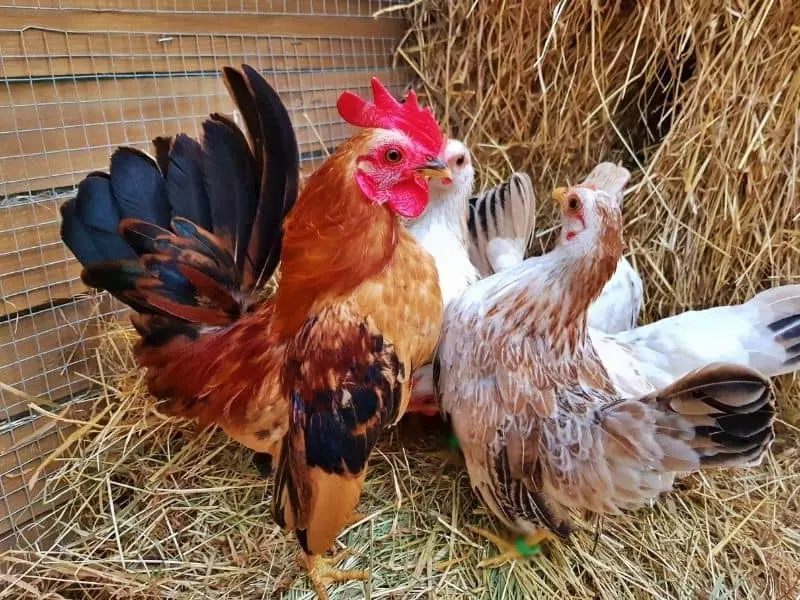
Originating from Malaysia, this breed is the world’s smallest chicken and has only been around for about 50 years.
They normally weigh anywhere from half to one pound, they are also anywhere from 6 to 10 inches tall. Due to their full breast, upright tail feathers, and wings that nearly touch the ground, these little chickens have been known to be described as brave warriors, however, they are very confident and assertive, as well as calm and very easily handled, especially by children!
Serama Bantams are well suited for warmer climates, and they also handle confinement in chicken coops very well.
Japanese bantams
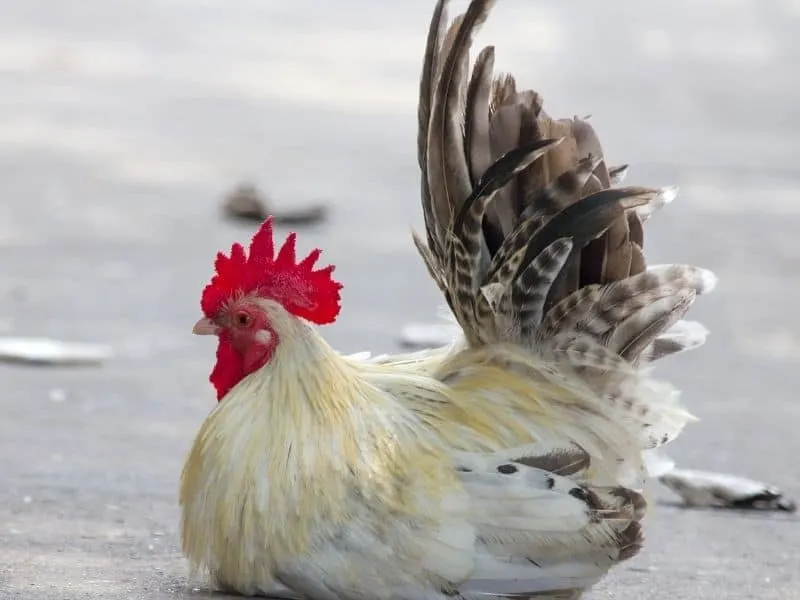
This is yet another ornamental breed, although they have been around Japan and China since the early 1600s.
These chickens are best known for their very short legs as well as having a tail that stands nearly straight up. The hens normally weigh around one pound and grow to around 8 inches tall, while the cocks’ can weigh almost one and a half pounds and grow to about 12 inches tall.
These hens are also very docile and can be handled easily. However, the males are known to get aggressive over their territory, both towards humans and other chickens. Japanese Bantams do handle confinement in chicken coops well, although they do not fare well in the cold, and should be raised in warm climate areas.
Pekin bantams
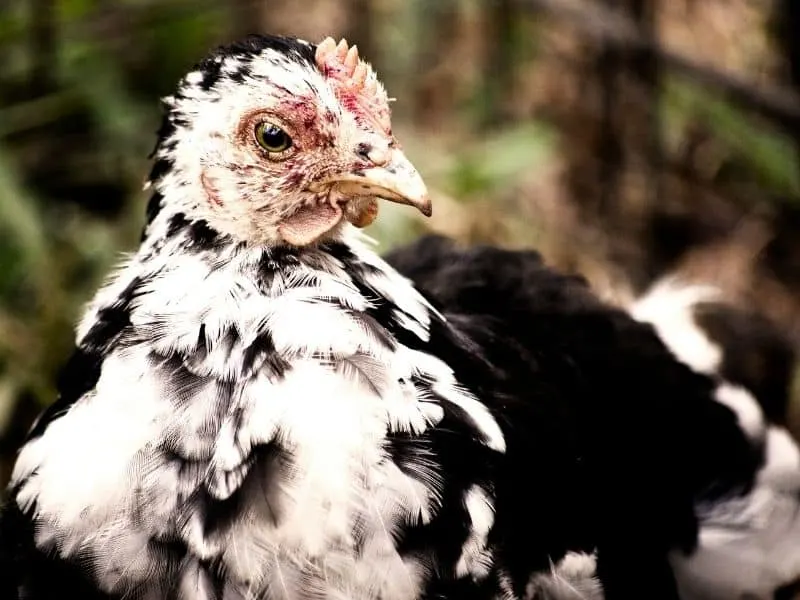
Otherwise known in the United States as Bantam Cochins, Pekin Bantams are a European breed that is believed to originate from Peking, China in the 1800s.
These birds are known for the feathering on their legs and feet, as well as their round shape, and forward-tilted stance. Cochin Bantam hens can weigh up to 1.2 pounds, and cocks can weigh up to 1.5 pounds and generally stand around 12 to 14 inches tall.
Bantam Cochins are generally very gentle and docile chickens and can be handled easily by children. However, the cocks have been known to become aggressive over territory, or in general after they have reached sexual maturity.
Cochin Bantam hens are very broody, and are known to be wonderful mothers, and are even suitable to be raised in cold climates. Extra care must be taken due to their leg feathers because if they get too dirty they could contract foot rot.
Sebright bantams
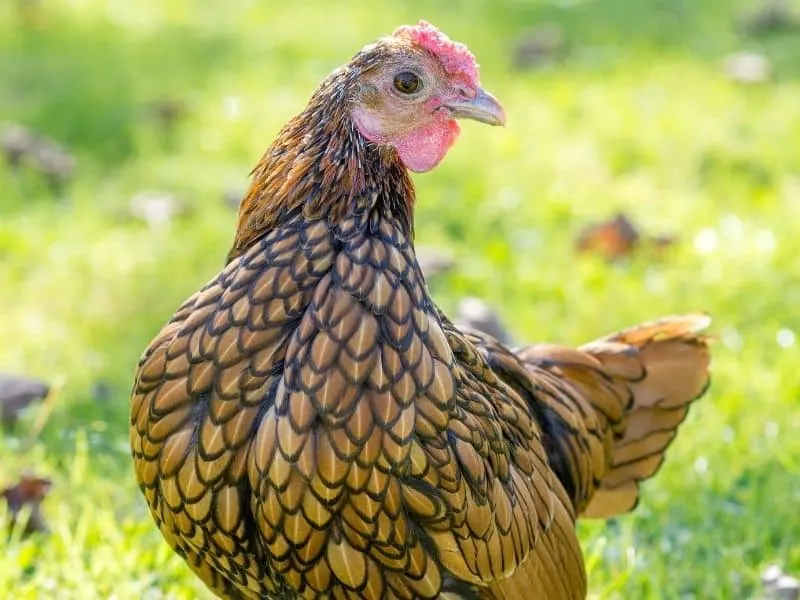
A British breed originating in the 1800s, these chickens were named after Sir John Sebright who bred multiple bantam breeds together to create this new bantam breed.
Yet another ornamental breed more commonly seen in competitions, these chickens are known for their large breasts, shorter backs, and downward-facing wings which cause them to look almost curious.
Sebright hens only weigh three-quarters of a pound fully grown, while the males can weigh close to a pound once fully grown. These birds are very active and confident, yet are docile enough to handle, and they care well in both warm and cold climates.
You can raise these bantams in coops, but it is recommended to have ample room for them to run around.
2. Miniature Bantam Breeds, Size, and Temperament
Miniature bantams are those that have been bred from a larger breed of chicken into a smaller variety, much like how they do with dogs!
As a general rule for miniature bantam breeds, they will look and act very similar to their larger counterparts. These bantam breeds are kept as both ornamental breeds, and for their capability to produce eggs!
Some of the miniature bantams that are recognized by the American Bantam Association include breeds such as the Bantam Buff Orpington, the Buff Brahma Bantam, Plymouth Rock Bantams, and Sussex Bantams.
Buff Orpington bantams
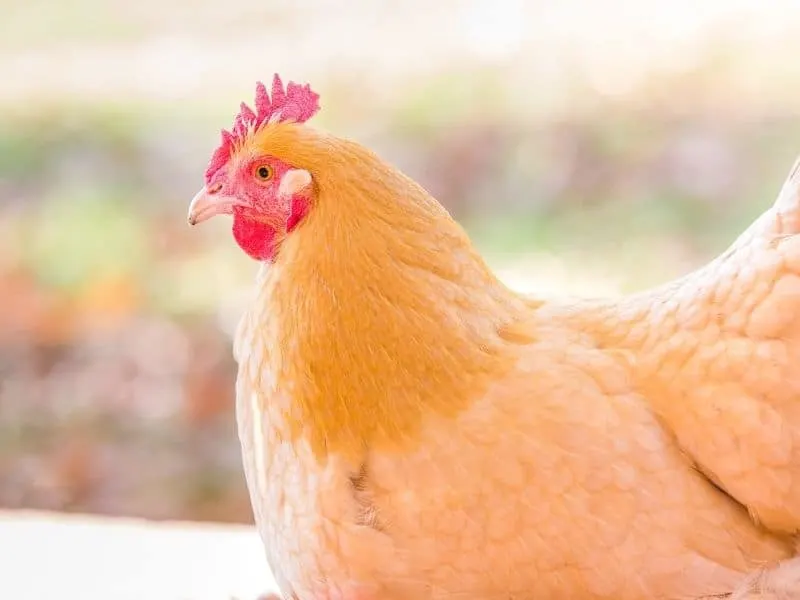
Buff Orpington bantams were originally bred in 1929 by John Burdett and were officially admitted into the American Poultry Standard of Perfection (APSP) in 1960.
Just like the larger version, Buff Orpington Bantams can be raised as both meat or egg-laying birds, are very docile in temperament, and also can handle cold climates fairly well.
While the larger version can weigh up to 8 pounds, the bantam version only weighs up to approximately 3.5 pounds! These bantams are very similar in looks to that of their larger counterparts. The Buff Orpington Bantam is also capable of being raised in either a chicken coop or free-range, and does not become aggressive, which is ideal in backyard chickens if you have children!
Buff Brahma bantams
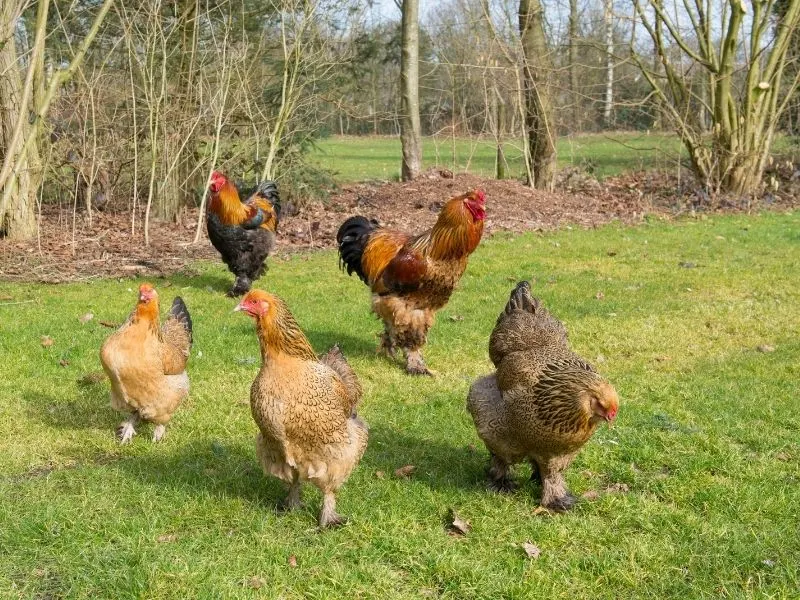
Buff Brahma Bantams are another great choice when it comes to a backyard flock and were first introduced in 1898 as a miniature ornamental breed and accepted into the APSP in 1946.
Just as with the standard size, Buff Brahma Bantams can be used either for meat or eggs, and are generally very quiet, and well-mannered, birds.
These bantams have feathered legs and feet, so precautions must be taken to avoid foot rot! Mature Bantam hens can weigh up to 2 pounds while the cockerels can weigh up to 2.5 pounds, and they are known as the largest bantam chicken breed with some reaching up to 22 inches tall.
Buff Brahma Bantams are also known to be kid-friendly and easily handled, and also fare well in cold climates either in coops or free-range.
Plymouth Rock bantams
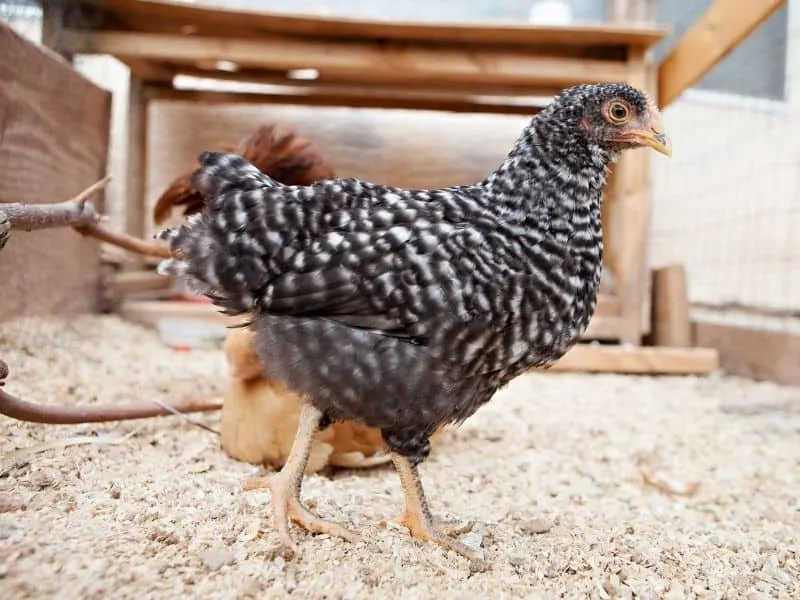
Plymouth Rock Bantams were originally introduced in the early 1900s in several countries such as the US, Germany, and Britain.
They are very well known for their long bodies and shorter tails with a large, round breast and bright yellow legs! Bantam hens can weigh a little over 2.5 pounds while cocks can grow as large as 3 pounds, and are one of the largest breeds of bantams.
These chickens are the perfect choice for a small backyard because this is one breed of bantams that do not fly well, so higher fencing is not required as with some other breed. Although they do prefer free-range, they do handle being cooped very well, and lay eggs fairly early compared to other breeds!
Sussex bantams
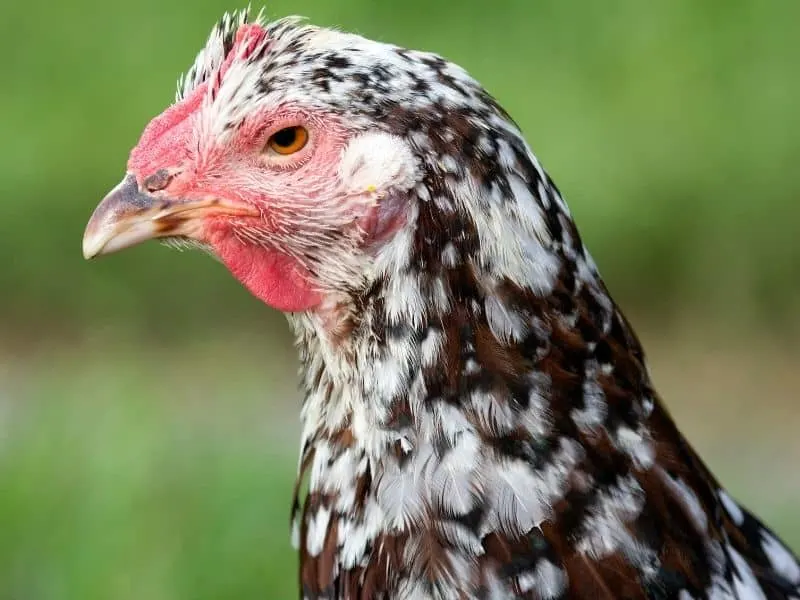
Sussex Bantams were originally bred and introduced in Britain around the 1920s.
Sussex chickens, both the standard and bantam version, are well defined by their almost rectangular shape, deep breast, and featherless red face, and white legs. Bantam hens can grow up to 2.5 pounds while the cockerels can get as big as 3.3 pounds!
These chickens are another good choice for a small backyard flock because they are easily tamed, very calm in demeanor, and will do almost anything for a treat! They are great pets to keep if you have children as well because this bantam breed does not get aggressive. The bantam hens make wonderful mothers, and they do brood well together, and they also can handle inclement weather very well.
3. Developed Bantam Chicken Breeds, Size, and Temperament
Developed bantams are commonly misconstrued as true bantams because they also do not have larger counterparts, but as with miniaturized bantams, they were bred to be what they are.
These breeds of bantams are generally kept as an ornamental breed and do not produce eggs as consistently as miniaturized bantam breeds. Common examples of developed bantam breeds are Silkie Bantams, the Barbu D’uccle Bantam, the Mille Fleur D’uccle Bantam, and could even include the Sebright Bantam (and I’ll explain why below).
Silkie bantams
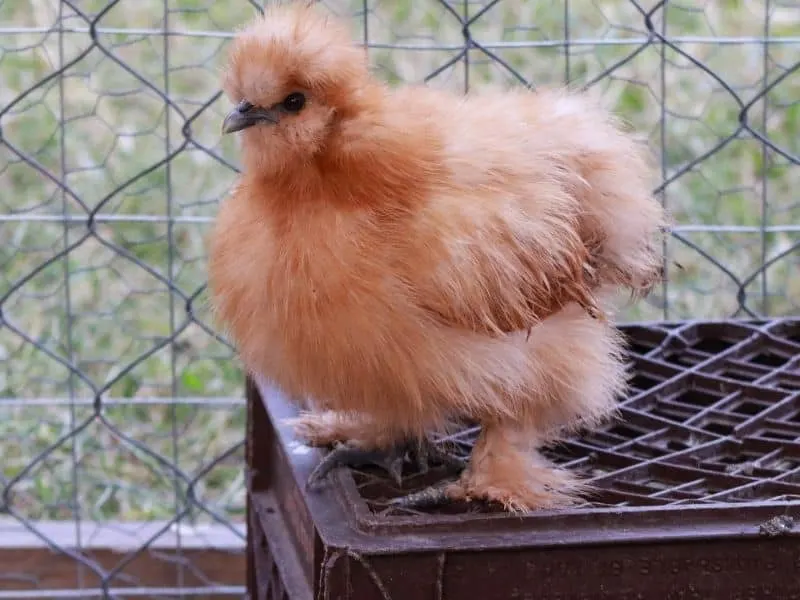
Originating from China, and can be considered a true bantam breed because the Silkie is naturally small, these hens weigh in at around 3 pounds on average and cocks can weigh up to 4 pounds. However, they have been bred to be a bantam version in the US, Australia, and Britain. The US-bred Silkie Bantam hens weigh in at 2.5 pounds and cocks can weigh up to 3 pounds. Australian-bred Silkie Bantam hens weigh around 1.2 pounds and cocks can weigh up to 1.5 pounds; the Britain-bred Silkie Bantams are smaller still, with hens weighing up to 1.1 pounds and cocks weighing up to 1.3 pounds.
Silkie Bantams are most commonly known for their feathers, which are rather fluffy and soft like silk. They are also one of the most gentle, and friendly bantam breeds and make great pets because of this fact!
Silkies do well in both warm and cold climates and make wonderful mothers because of how well they brood. It has been stated that some Silkies even hatch eggs from different chicken breeds due to how broody they are naturally.
Barbu D’uccle bantams
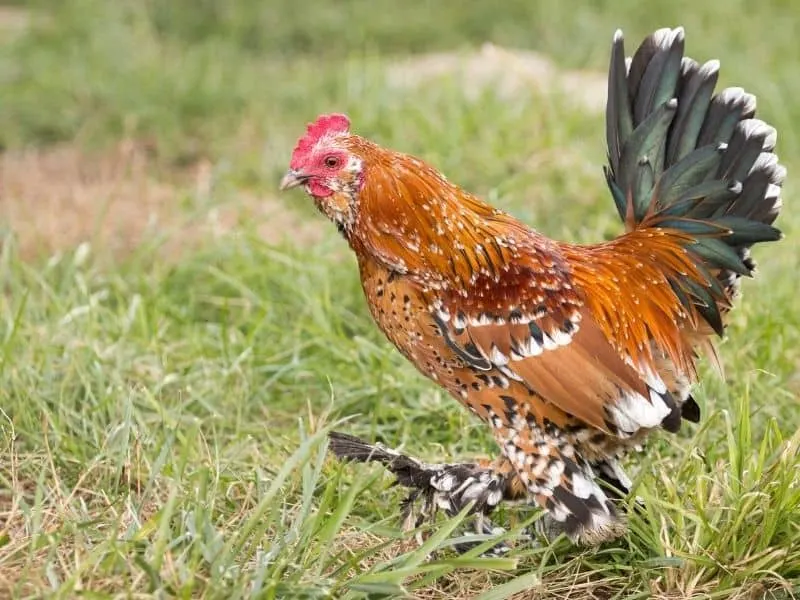
Developed in 1905 by Michael van Gelder in Brussels, Germany by crossbreeding the Dutch Sablepoot Bantam and the Barbu d’Anvers Bantam, the Barbu D’uccle Bantam was officially recognized by the APSP in 1909.
These bantams are known to be fully bearded, with heavily feathered legs, and a very low posture with a “V” shaped appearance. On average, these Barbu D’uccle hens only weigh approximately 1.3 pounds, and cockerels can weigh up to 1.6 pounds. They can adapt well to cold climate areas. However, they are not particularly fond of wet weather due to the number of feathers they have.
They are generally docile and friendly towards humans and other animals alike and great pets for kids, although they have been known to be skittish around larger animals.
Mille Fleur D’uccle bantams
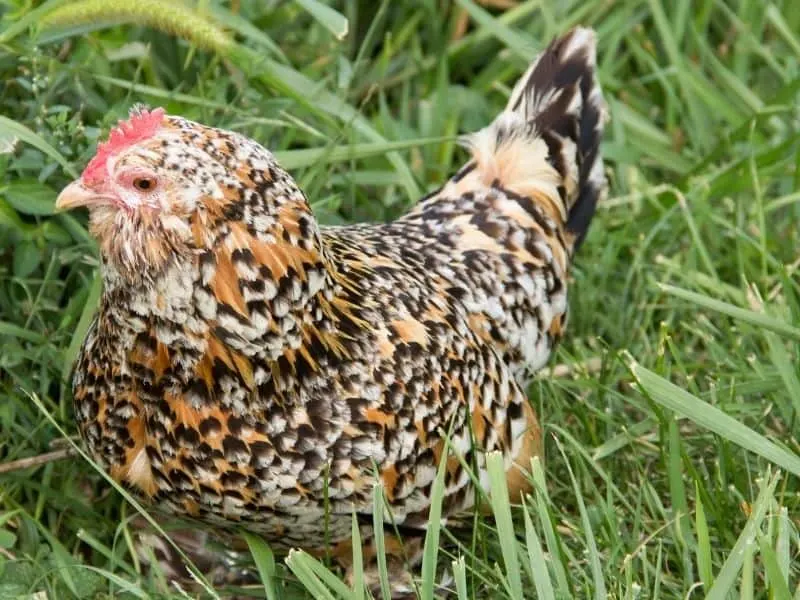
This breed a cross between Dutch Booted Bantams and Barbu D’uccle Bantams developed yet again in the early 1900s by Michael van Gelder and officially added to the APSP in 1914.
These bantam hens normally weigh a little under 1.5 pounds while the cockerels are around the same size, and only weigh up to a little over 1.5 pounds.
The Mille Fleur D’uccle Bantam is well known for its short feathered legs, a short bearded neck, and generally broad appearance. These birds are very friendly in temperament, however, as far as bantams go, they are more talkative than most.
These birds do not fare well in a cold climate, and as with all feathered legged chickens, they are prone to scaly leg mites and foot rot, so extra care is needed to ensure the health and safety of your flock.
Sebright bantams
Although Sebright Bantams are considered to be a true bantam breed because they do not have a larger counterpart, they are also considered a developed bread because they were crossbred from multiple breeds of bantams by Sir John Saunders Sebright in an attempt to create a bantam that would look similar to a laced Polish. These birds were officially recognized by the very first APSP in 1874.
4. Best Egg Laying Bantam Chickens>
For the egg aficionados out there who would like the get the most out of their backyard chickens, there are a few varieties of bantams that do lay eggs more consistently than others. These varieties include Ameraucana Bantams, Easter Egger Bantams, as well as the previously mentioned Buff Brahma Bantams, Plymouth Rock Bantams, and Sussex Bantams.
Ameraucana bantams
Ameraucana Bantams were developed in the United States in the 1970s and officially recognized by the APSP in 1984.
They are most commonly known for laying blue eggs, as well-being fully bearded with signature black tail feathers and a red face. These bantam cocks can weigh up to 2 pounds, and the hens, who are also wonderful mothers, can weigh around 1.5 pounds.
Much like their larger version, these bantams are very friendly and energetic, need a little space to run around, and don’t do well in complete confinement. The reason these bantams are a great choice for a small egg layer is that these are one of the few bantam breeds that will lay eggs approximately 4 times per week almost all year round.
Bantam Easter eggers
Very similar to their larger counterparts with regard to being good egg layers, Bantam Easter Eggers are very friendly. However, cockerels can become aggressive. These bantam roosters can weigh up to 3 pounds, while hens can weigh up to 2.5 pounds, and lay eggs in shades of blue, green, and sometimes even pink.
These bantams are a perfect choice to lay eggs in a small backyard because they produce about 5 to 6 small eggs per week! Bantam Easter Eggers do well in warmer climates because of their size but also do well in cold climates because they aren’t as susceptible to frostbite as other breeds because of their smaller-sized pea comb.
Other egg-laying breeds
The aforementioned Sussex, Plymouth Rock, and Buff Brahma Bantam breeds are also known to be good backyard egg layers because they produce anywhere from 3 to 5 eggs per week and all do well in confinement! They do produce large eggs for a bantam, although, when used for cooking, it is still recommended to use 3 bantam eggs for every 2 regular eggs being substituted.
Learn more about raising chickens for eggs.
Frequently asked questions
Can bantams be kept with regular-sized chickens?
Yes, most bantam breeds can be kept with regular-sized chickens and are not picked on as much as you may think. Although it is not recommended to start a new flock of bantams with a pre-existing flock of standard chicken breeds.
Can bantam roosters mate with regular hens?
Bantam roosters can and will attempt to fertilize as many eggs as they can, although, whether or not the attempt is successful is entirely dependent on the specific bantam breed.
Are bantam chickens noisy?
Most bantam chickens are very quiet but still make some noise. Some breeds may get particularly noisy if there are any other talkative chickens in your flock.
Can bantam chickens fly?
Bantam chickens are extremely well known for having the capability to fly better than standard-size chickens, and because of this, it is highly recommended to have a tall fence surrounding your run.
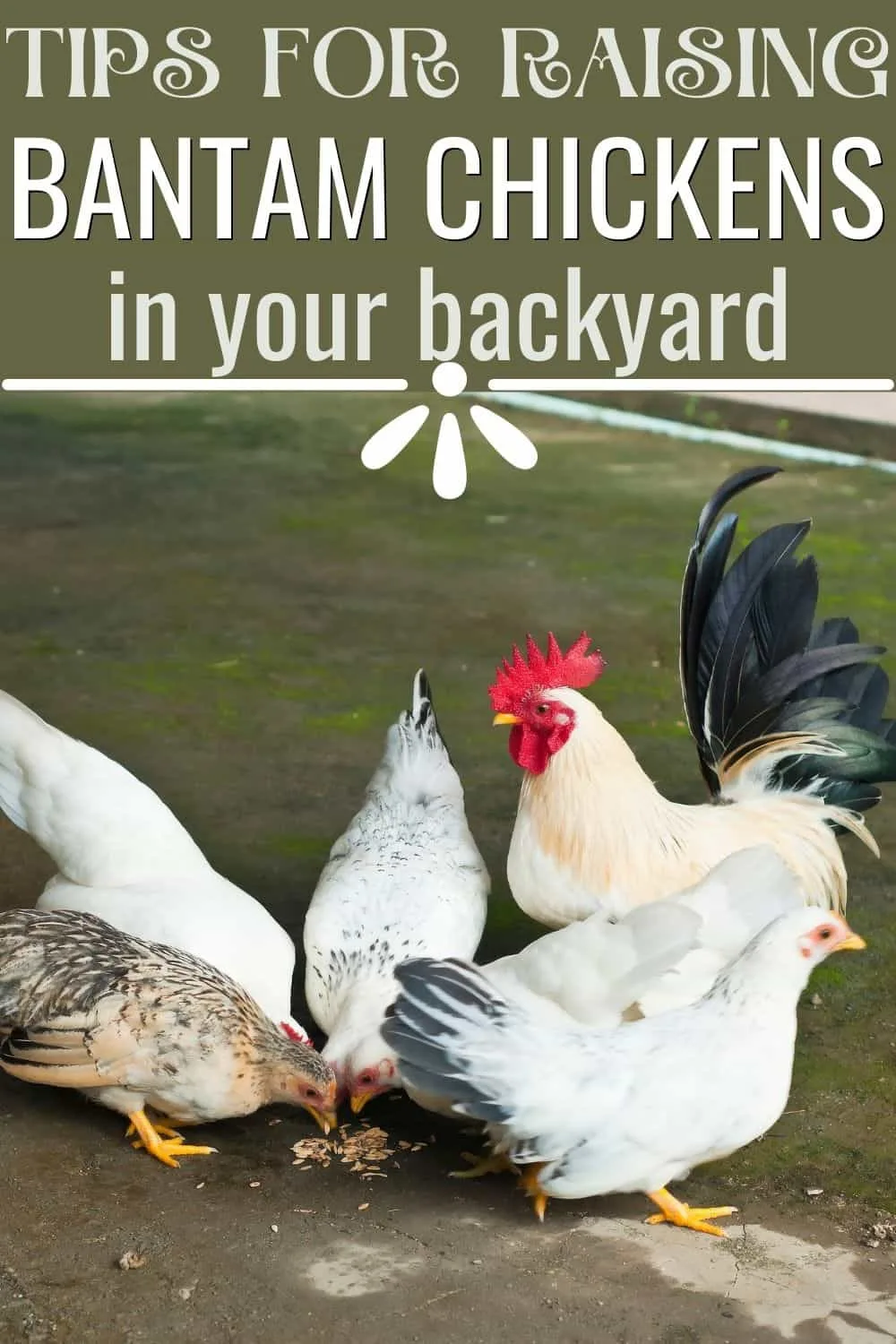

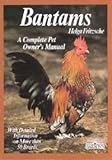
How To Get Rid Of Ticks In The Yard
Thursday 20th of July 2023
[…] Chickens (here’s a guide to raising chickens in the backyard) […]
So You Have A Broody Hen: What Now?
Monday 27th of March 2023
[…] hen, let’s say a Buff Orpington, 10-12 large eggs should be sufficient. If you have a bantam hen on eggs, you’ll want to give her less. Typically my bantams can handle between 4-6 large […]
Quick Guide To Raising Backyard Chickens
Thursday 28th of July 2022
[…] Raising Bantam Chickens In Your Backyard (Favorite Breeds) […]
Guide To Raising Buff Orpington Chickens
Tuesday 13th of April 2021
[…] carriage and a curved, low back. The roosters have eye-catching fluffy tails. Orpingtons come in a bantam variety as well as a traditional size. The bantam Orpingtons generally weigh around 3 or 4 […]
10 Best Brown Egg Laying Chicken Breeds
Monday 12th of April 2021
[…] Serama is a true bantam breed and is the smallest breed of chicken. Some weighing in at only six ounces and standing six inches […]